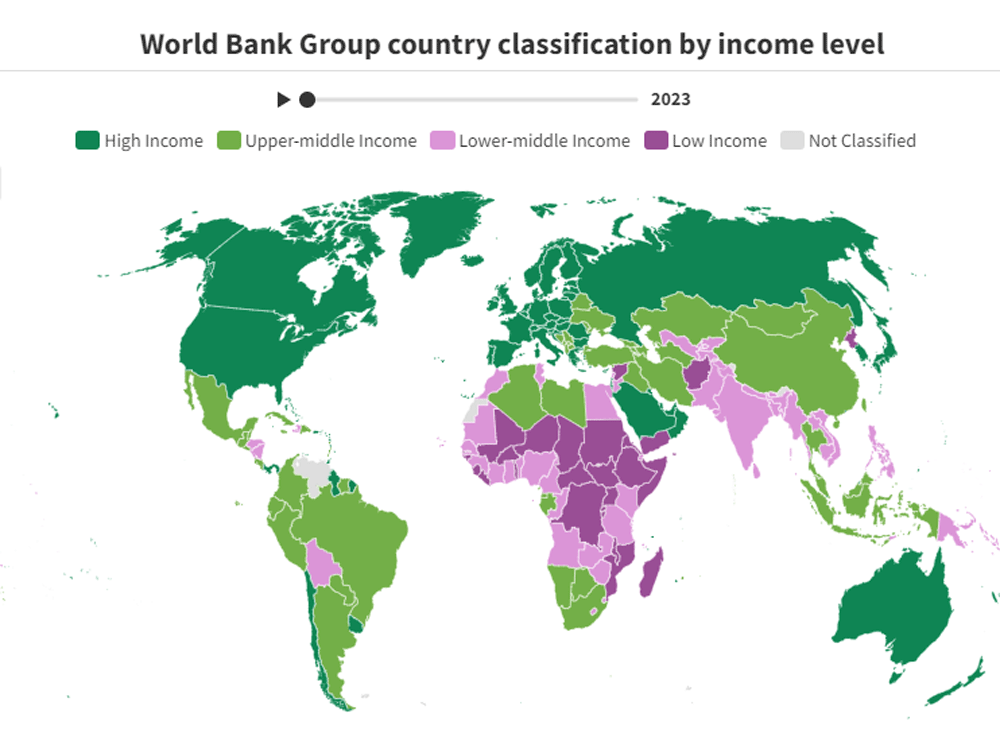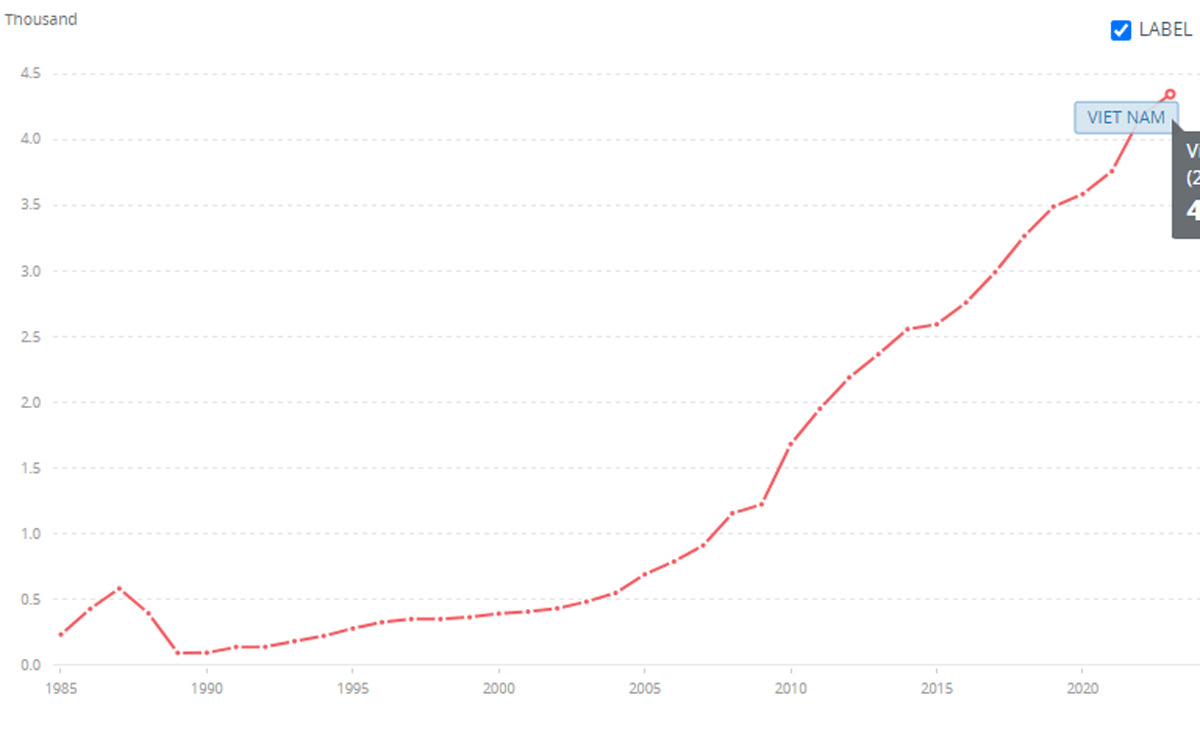
According to the World Bank (WB), in 2023, Vietnam's Gross Domestic Product (GDP) reached nearly $430 billion, with a per capita income of nearly $4,347.
This is a significant increase from approximately $100 per capita when Vietnam first opened its economy in 1988 and over $1,000 when it joined the World Trade Organization (WTO) in 2007.
Vietnam's per capita income growth rate has been exceptionally rapid, surpassing that of many regional countries, including Thailand and the Philippines.
In 1986, Thailand's per capita GDP was $836, and by 2007, it had risen to $3,935, marking a 4.7-fold increase. By 2023, Thailand's per capita GDP had reached $7,172.
With annual growth rates often between 6-8%, Vietnam is seen as entering the ranks of high middle-income countries like Malaysia, Thailand, and Indonesia.
However, under the latest classification applied for 2023-2024, Vietnam has not yet entered the high middle-income group.
Under the new classification from July 1, 2023, to July 1, 2024, countries are divided into four income groups based on per capita income: low income (below $1,135), lower middle income ($1,136-$4,465), upper middle income ($4,466-$13,845), and high income (above $13,845).
As of 2023, Vietnam's per capita income was nearly $4,347, placing it in the lower middle-income group.
From July 1, 2024, the upper middle-income group will include countries with per capita income from $4,516 to $14,005.
Based on this classification, Malaysia, Thailand, and Indonesia are upper middle-income countries, with 2023 per capita incomes of $11,690, $7,172, and $4,920, respectively.
Singapore and Brunei are high-income countries, with 2023 GDPs of $84,734 and $29,133 per capita, respectively.
Under the previous classification, from 2022 and earlier, Vietnam might have been in the high middle-income group. However, under the newer classifications, Vietnam needs more time and could potentially enter this group in 2024 with a per capita GDP increase of nearly $200.
Assuming a GDP growth rate of 6.5% in 2024 and minimal population growth, each Vietnamese citizen could gain over $280, pushing the country into the high middle-income group with per capita income criteria of $4,516-$14,005 from July 1, 2024.
Projected $32,000 per capita by 2050: When will Vietnam surpass Indonesia?

In late 2022, the government proposed a national master plan for 2021-2030, with a vision to 2050.
Vietnam aims to become a developing country with modern industry and high middle-income status by 2030. The goal for 2050 is a per capita GDP of $27,000-$32,000, with an annual GDP growth rate of around 7% from 2021-2030.
By 2030, the per capita GDP at current prices is expected to reach approximately $7,500, with the population reaching about 105 million.
By 2050, Vietnam aims to become a developed, high-income country, with a GDP growth rate of around 6.5-7.5% annually from 2031-2050.
As of 2023, Vietnam's per capita GDP ranks sixth in Southeast Asia, behind Singapore, Brunei, Malaysia, Thailand, and Indonesia.
According to the International Monetary Fund (IMF), Vietnam is projected to surpass Indonesia in per capita GDP by 2026.
Previous calculations suggested Vietnam would take over 10 years to catch up to Thailand, nearly 20 years to match Malaysia, and 50 years to surpass Singapore in per capita GDP.
However, these are based on assumptions, and many variables exist. If countries maintain their average growth rates of the past decade, Vietnam might need over 50 years to surpass Malaysia and more than 100 years to catch up to Singapore.
The IMF forecasts that by 2026, Vietnam will rank fourth among the ASEAN-6 in per capita GDP, reaching $6,140, behind Singapore ($97,316), Malaysia ($17,121), and Thailand ($9,480), but ahead of Indonesia ($6,125) and the Philippines ($4,801).
However, Vietnam could potentially grow faster for several reasons.
Vietnam maintains a rapid development pace post-pandemic, has a highly open economy, participates in numerous bilateral and multilateral trade agreements, and is a key destination for FDI and a vital link in the global supply chain. Vietnam is also a comprehensive strategic partner with major economies such as China, Russia, the US, and Japan.
Manh Ha